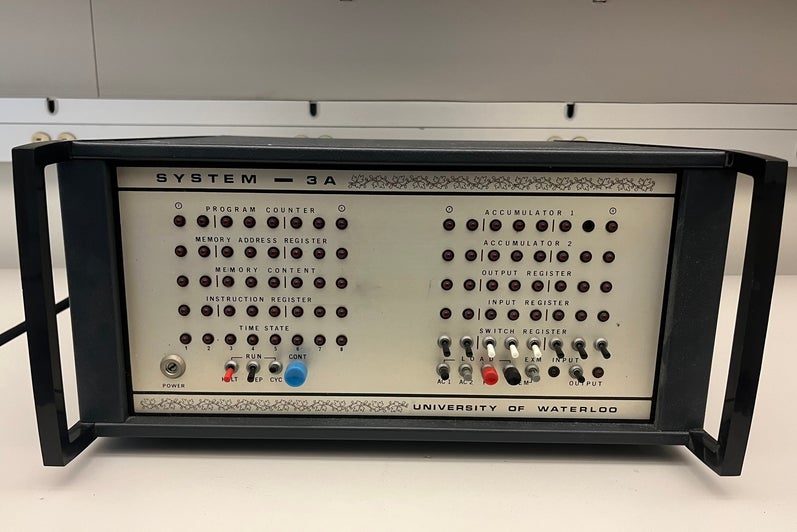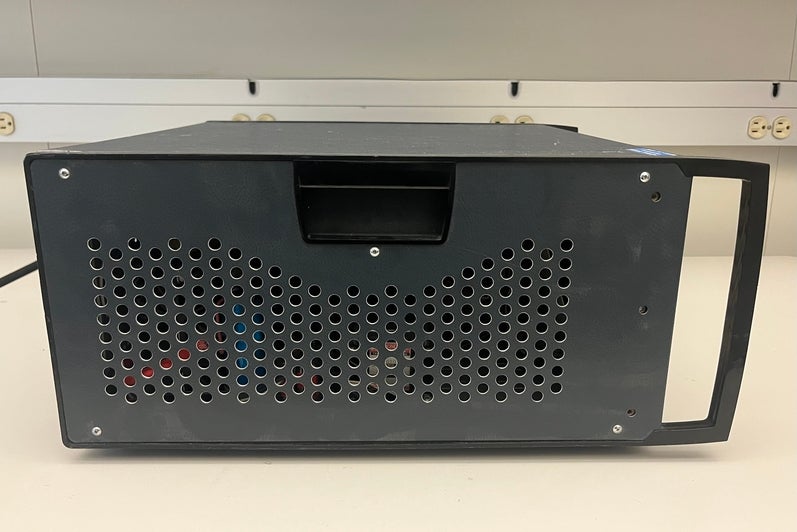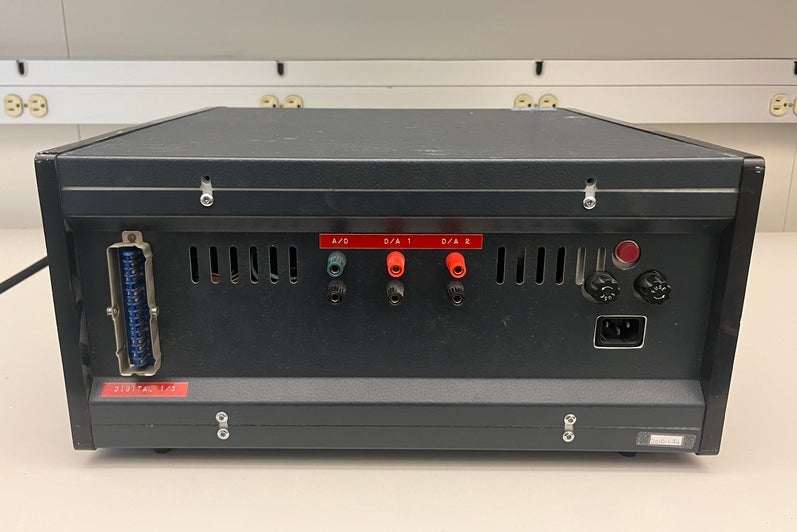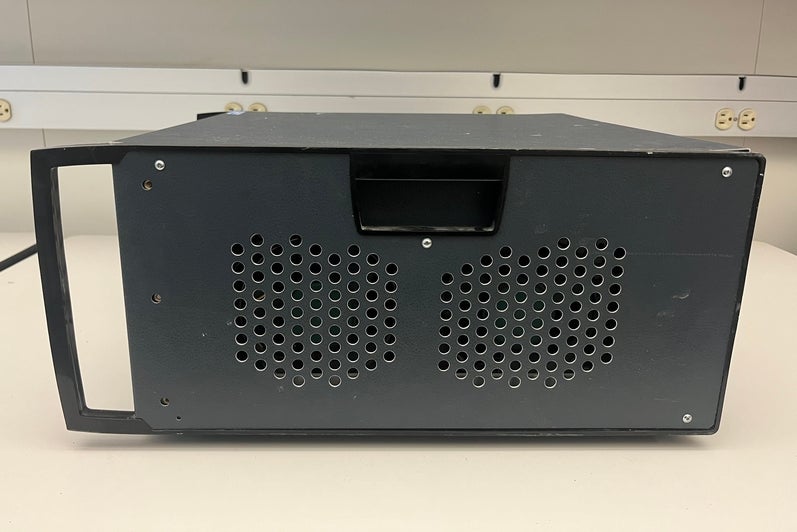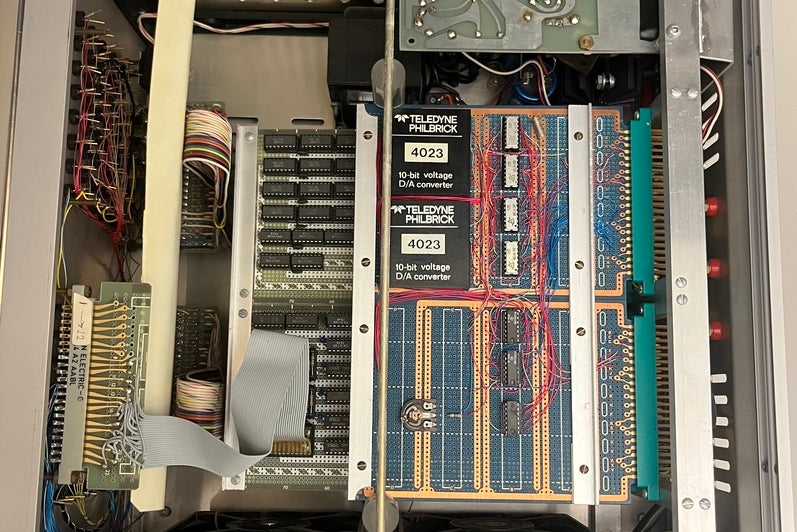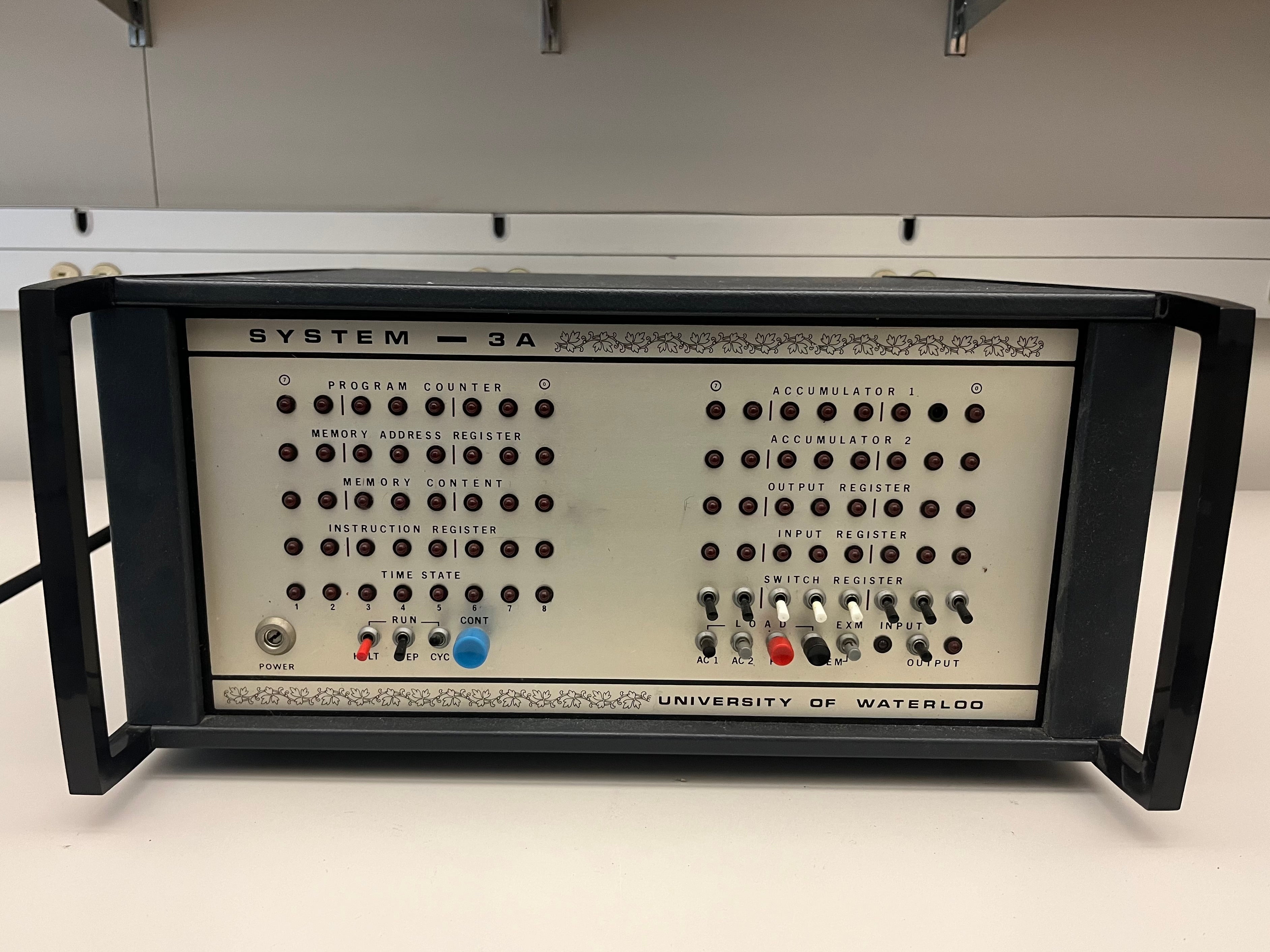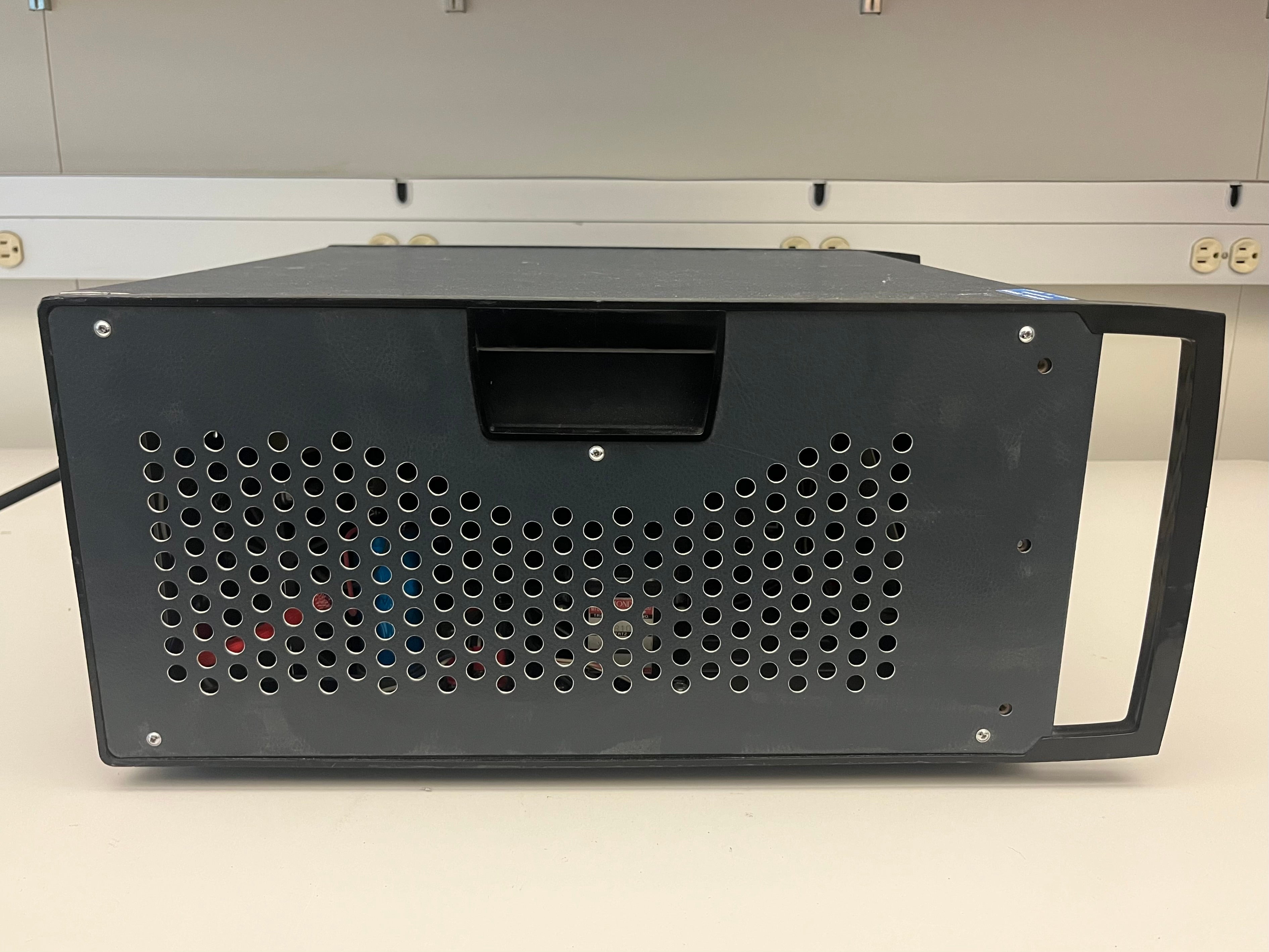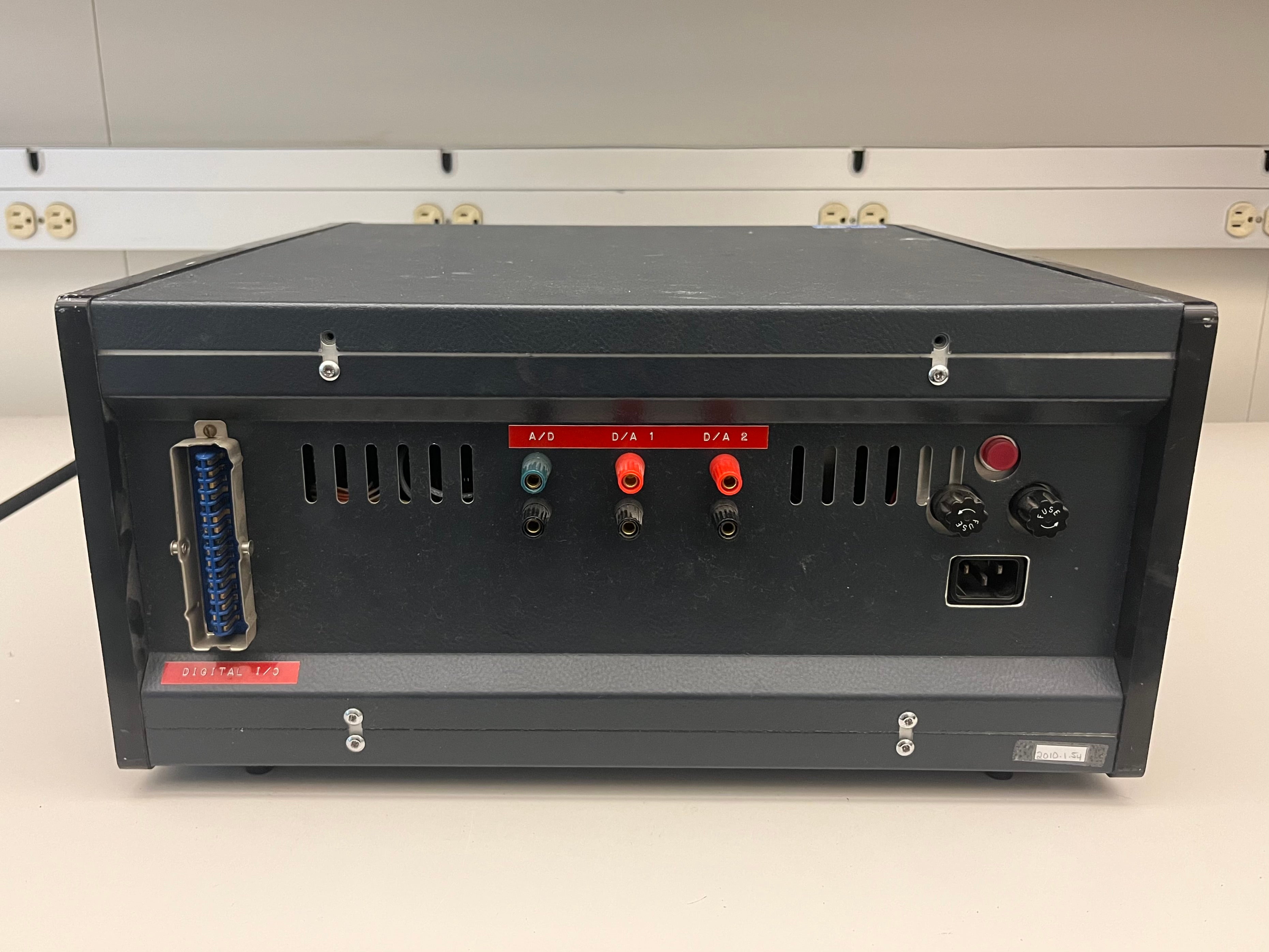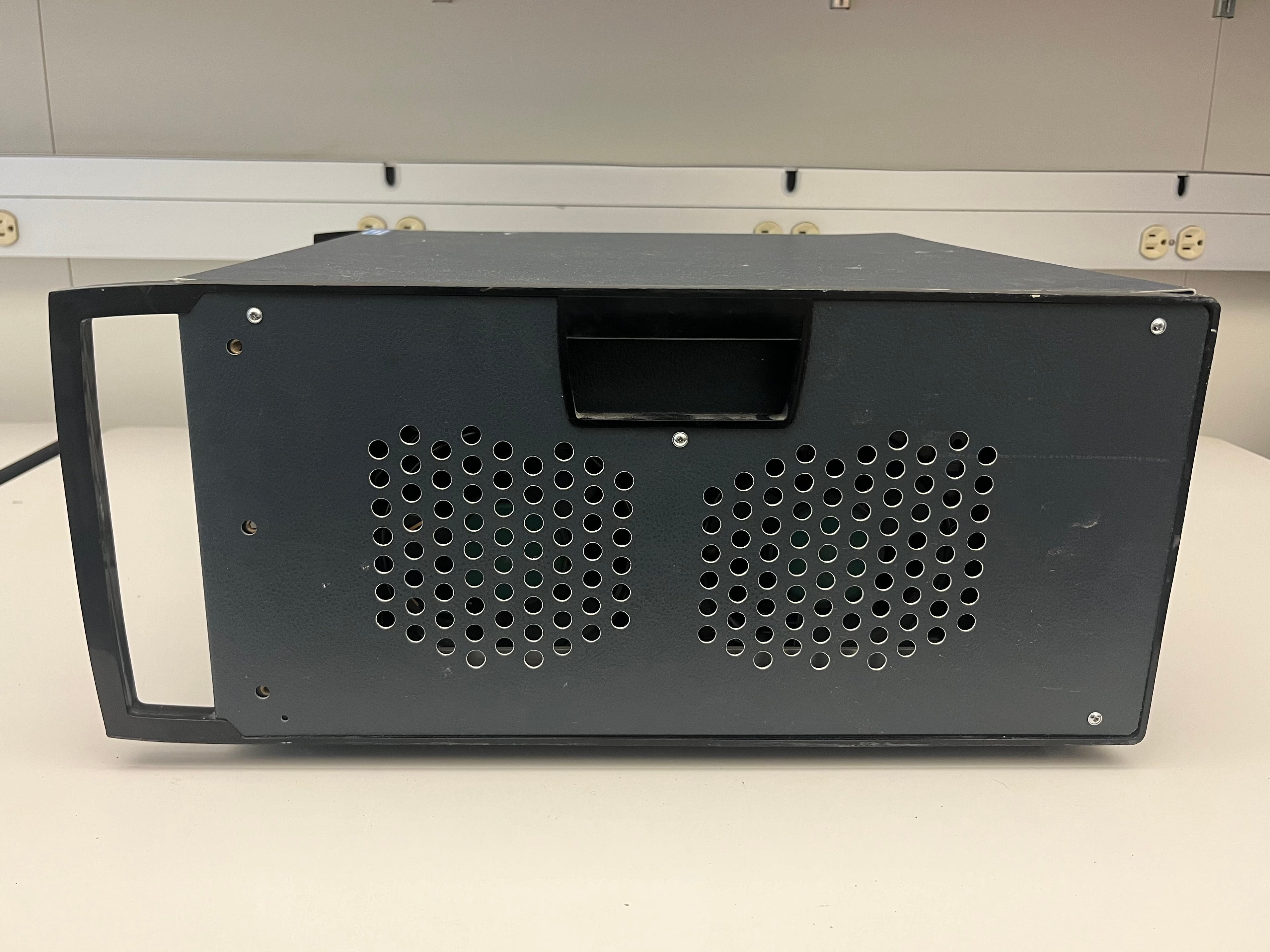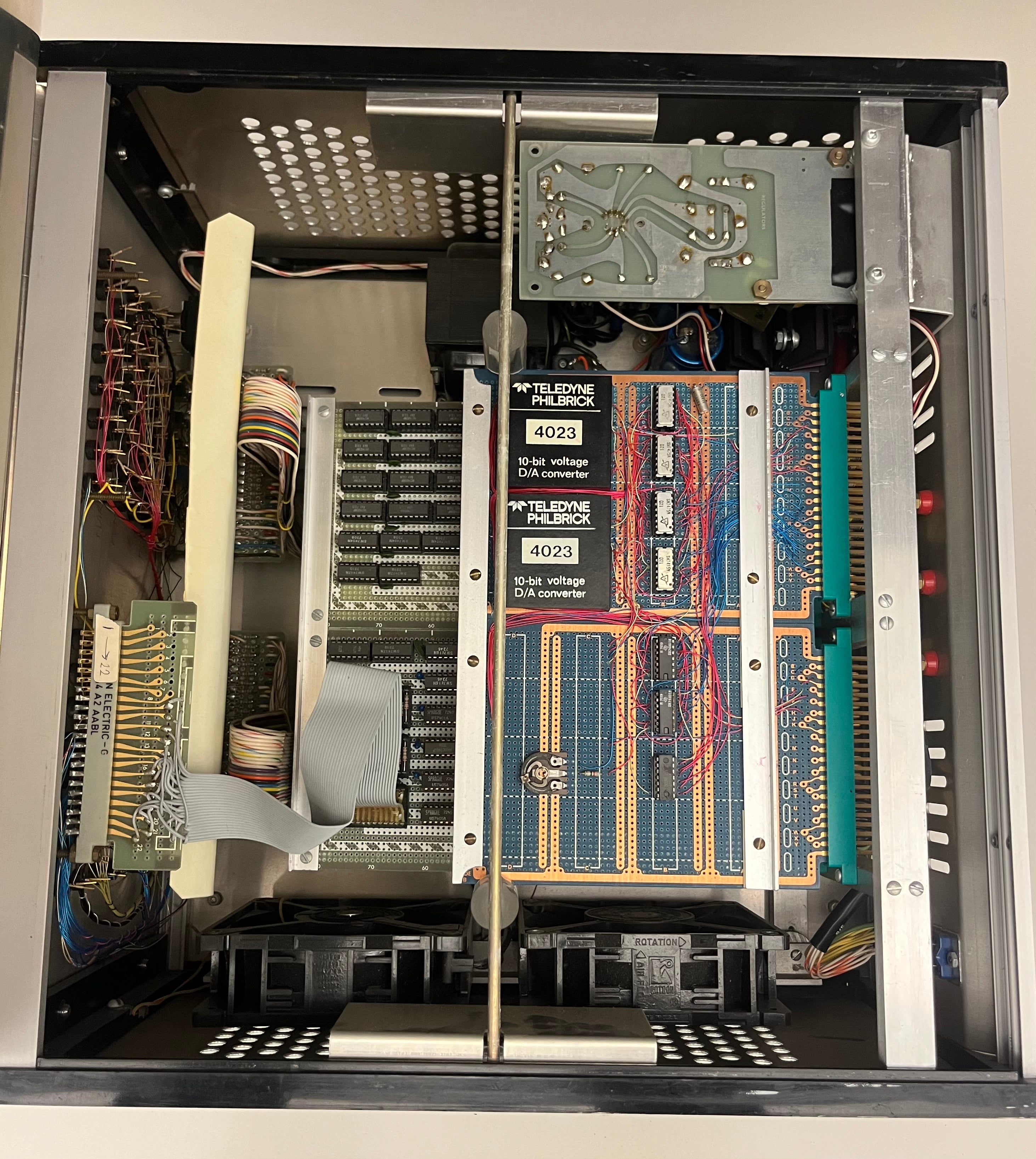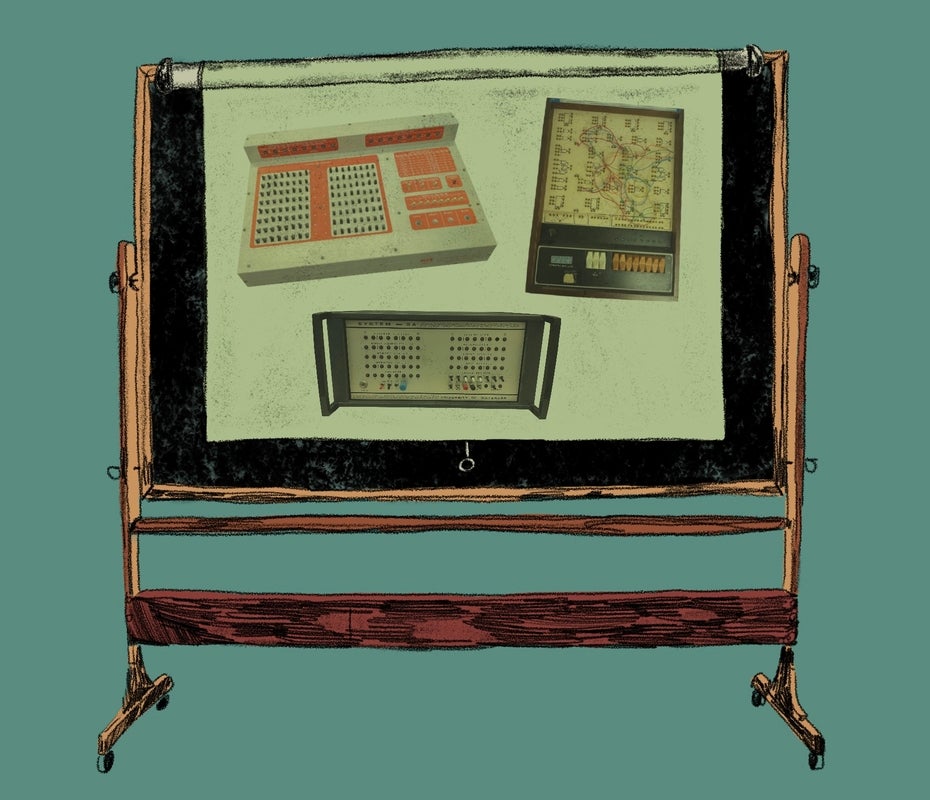
The University of Waterloo is well known for it's competitive Computer Science program, with the David R Cheriton School of Computer Science being the largest academic computer science research centre in Canada (as of 2024).
The Computer Science department, originally titled "The Department of Applied Analysis and Computer Science", was founded in 1967 with the creation of the Faculty of Mathematics. More about this history can be read on the University of Waterloo website: David R. Cheriton School of Computer Science 50th Anniversary History of Computing at Waterloo
The Computer Museum's collection contains a few artifacts that were designed in the early 1970s to help people learn about the fundamentals of computing. Not all were used here at the school, but they provide insight as to what learning computing was like around the time the department was founded.
National Radio Institute Model 832
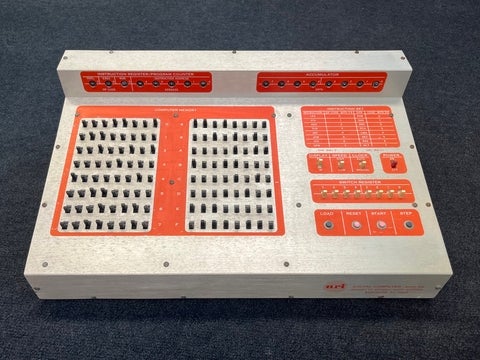
The National Radio Institute (NRI) Model 832 was a digital computer created in 1972 for training purposes and teaching digital computer fundamentals. It was designed to simplify user operation of a digital computer without sacrificing its features. It was designed by Lou Frenzel, and originally sold for around $500 USD.
More information can be found in The Model 832 Digital Computer Reference Manual.
This item originally belonged to Albert D. Rich and was donated by David Stoutemyer.
View it in our catalogue: 2024.26.25
General Specifications
| Maximum Memory | 32 8-bit binary words |
|---|---|
| Addressing | Direct addressing in a single address format |
| Input | Front binary switches |
| Output | Two 8-bit binary light displays |
| Programming | Machine language using hexadecimal notation |
| Circuitry | Seventy-four type 7400 TTL integrated circuits |
| Total Weight | 16 lbs |
I developed a computer kit for McGraw Hill’s National Radio Institute (NRI) in 1972 using TTL called the 832. It used a 16 word 8-bit programmable ROM made with slide switches. Another 16 words of RAM was a pair of 7489s TTL 64-bit SRAM. There were 8 instructions, a serial CPU and a clock of 500 kHz. We sold several thousand of them as part of a home study course in computer technology. It worked great and was a great training device. It is amazing what you can program in just 32 words.
Digital Equipment Corporation Computer Lab
The Digital Equipment Corporation (DEC) Computer Lab was a DEC Canada creation, developed in 1968. It was designed as a training device to teach students the basics of logic circuits. The original teaching package came with a patch-cord panel, 100+ taper-pin patch-cords, a student workbook, and a teacher’s guide.
The Computer Lab had the following features: Logic Levels, Rocker Switches, Pulser Switches, Pulses, Clock, Lamp Indicators and the ability to increase computational power by connecting several Computer Labs together. The handbook included 10 chapters, leading students through topics such as Basic Logic Gates, Flip-Flops, Boolean Algebra, and Serial Addition, to name a few. It can be found on The Internet Archive.
This item was donated by the University of Waterloo Systems Design Undergraduate Lab.
View it in our catalogue: 2010.1.53
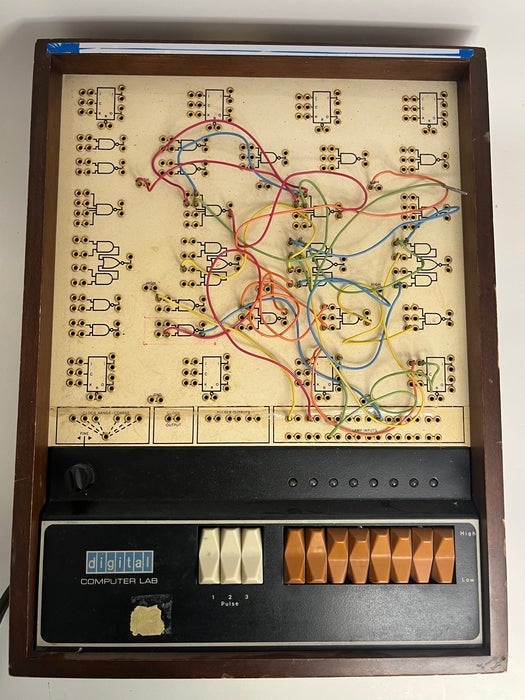
Front view of the DEC Computer Lab
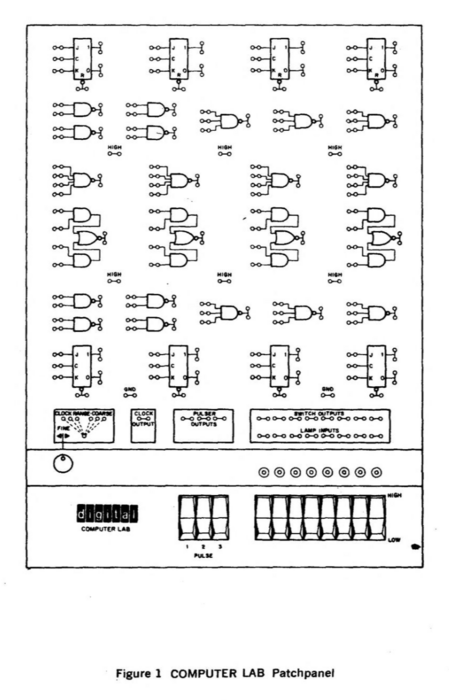
John L Hughes. Digital Computer Lab Workbook, page 10. 1969.
System 3A
This final piece of training equipment was also donated by the University of Waterloo Systems Design Undergraduate Lab, though it remains more of a mystery.
We believe this is some sort of device created by Systems Design Engineering students, as it’s labeled System 3A and University of Waterloo, though there are no other clues about what this name means, nor when it was created. Maybe it was made by students in their 3A term?
Take a look at these photos and see if you have any idea what it might have been used for. If you do, feel free to contact us. We’d love your input!
View this item in our catalogue: 2010.1.54
About the Author
Amy studies Computational Mathematics at the University of Waterloo and is currently working for the Computer Museum as their Summer 2024 co-op student. In her free time, she enjoys painting, collaging, and other forms of visual art making.
